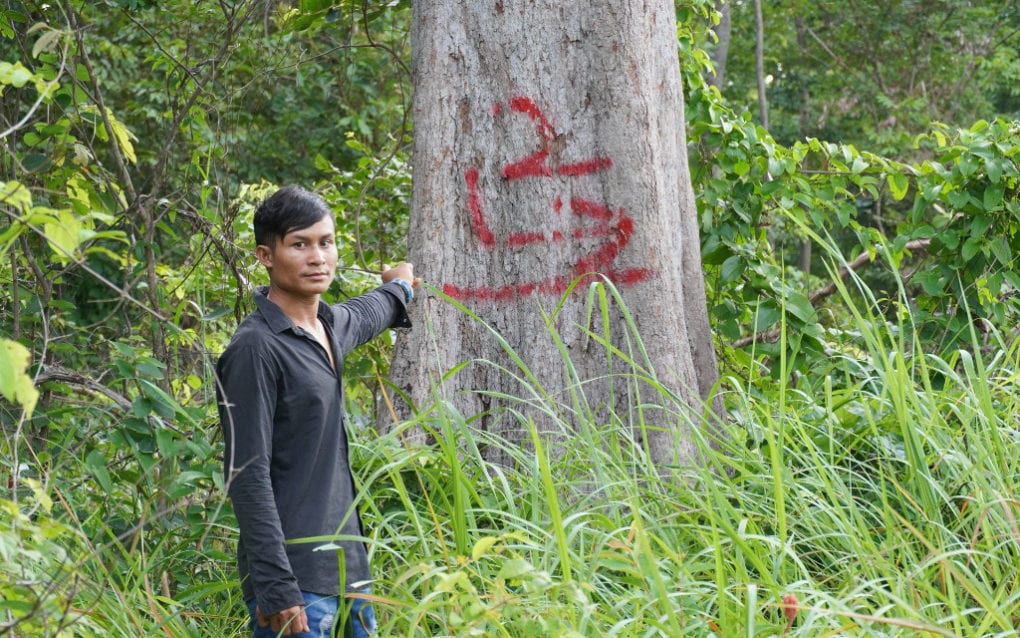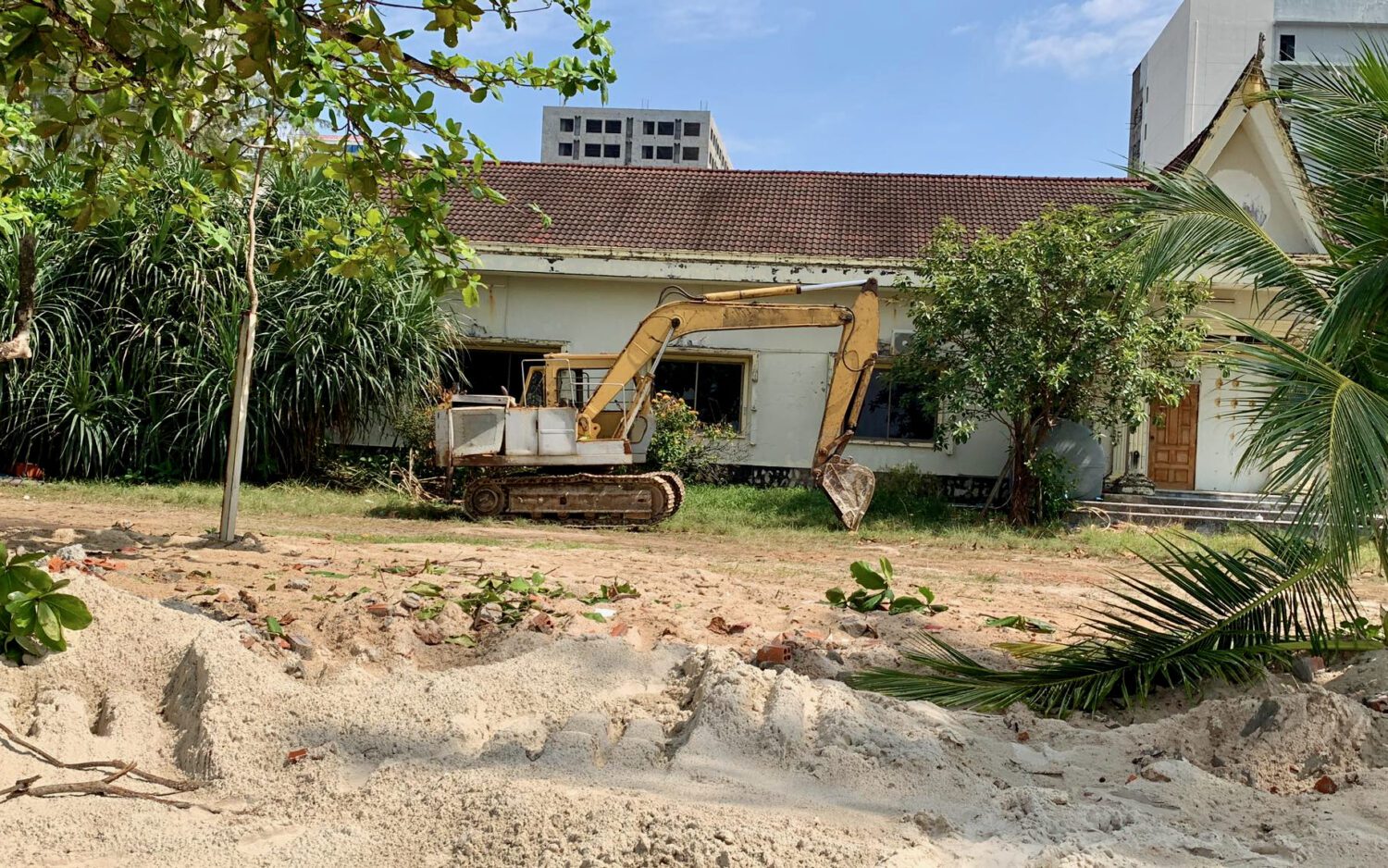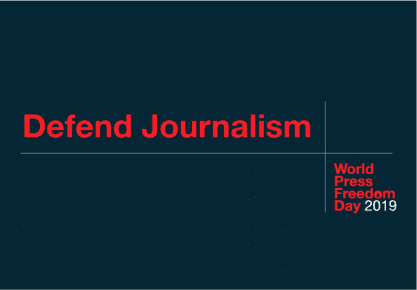SESAN DISTRICT, Stung Treng — When Choeu Neang, a 37-year-old mother of four, announced to her relatives her intention to stay in Kbal Romeas village some five years ago, her aunts and uncles told her that their Bunong indigenous community could never stand up to developers and investors.
At the time, a powerful joint venture involving Chinese, Vietnamese and Cambodian corporations was completing a $816-million, 400-MW hydropower dam — the Lower Sesan II — and developers and the government had made it clear they would complete the dam, and flood Neang’s village, at all costs.
But Neang was determined to remain, and she separated from her husband, who decided to move with his mother to the government-provided resettlement village more than an hour’s drive from the ancestral home.
The Lower Sesan II hydropower dam flooded Kbal Romeas and neighboring Srekor communes in 2017. Some 52 families declined the government’s resettlement offer, and instead moved to higher ground just beyond the floodwaters.
Neang, her parents and all of her children live as close as they can to their deluged ancestral burial ground. She says she still carries the pain of losing their homeland.
“We feel sad that we’ve lost our burial ground where we used to make offerings, and pity our new house and flooded farmland,” she says.
Their conflict with the Lower Sesan II hydropower is now mostly beyond redemption. But the residents say they’re bracing for a new wave of disputes. The community has gained recognition as a legal indigenous community with the Interior Ministry, but are now being pressured to accept a new resettlement deal as a rubber company begins to reassert its overlapping rights to the land.
Split From Tradition
To Sran Lanj, 42, moving away from the village was not an option. Most residents in Kbal Romeas village are ethnically Bunong indigenous, whose values are deeply tied to the land they occupy. Lanj says that generations of her ancestors are buried near the village, and the community holds important religious ceremonies in their spirit forest. And beyond the spiritual, the living community is important to them, says Lanj, who’s become a lead organizer for the remaining community.
Before, “we didn’t lack for water, fish or struggle to build new houses, new community spaces and struggle to build new infrastructure,” such as roads, she says. “Before, we lived harmoniously, gathering with our relatives and friends. … We had a pagoda, school, and so many people.”
More than 200 people stayed as the floodwaters poured in, living above the water in stilted homes until they eventually rebuilt homes, a school and community gathering place about 4 kilometers from their original land. They call themselves the “Old Kbal Romeas” village community, and the families who took the company’s settlement land along National Road 78 became “New Kbal Romeas.”
Above the now-permanent reservoir, almost two meters deep during the flood season in September, the skeletal frames of their village remain. Though many villagers took what they could from the properties, and the pagoda and its gate, a health center and the bathrooms from the old school remain standing, floorboards resting just above the standing water.
The villagers take boats to fish the waters or visit their ancestral ground, wading through clusters of dying trees that were not adapted to survive permanent floods.




The government’s promise of land and livelihood, in an area less remote from Stung Treng’s other communities, drove wedges through families. Lanj says her older brother had been angry with her when she first said she would stay, expecting that she would lose everything when the dam opened its gates.
“[Those who moved away] said they believed in the company’s scare tactics, that when the dam became operational, the whole land of Kbal Romeas and Srekor [villages] would sink into the [reservoir] basin bed,” she says. “[The developers] frightened them like that and they believed it would be so. But some of us didn’t believe it.”
Old Kbal Romeas residents tell VOD that they took the better option, as they have a closer connection to their ancestral land than their relatives who moved more than an hour’s drive from the original village.
Cambodia’s indigenous communities have historically lived communally in large areas, where they segment their spaces for homes, farms and spiritual purposes, according to Hean Bunhieng, the executive director of the Cambodian Indigenous People’s Organization (CIPO).
His organization helped Kbal Romeas and other indigenous communities to map out their village in the way they have historically used it, including houses, rotational farmland, spirit forests or mountains, and ancestral burial ground.
Bunhieng says he and other indigenous groups have struggled to resolve this mapping style with governments, communities and even international NGOs that try to facilitate indigenous land titling, because they do not grasp the significance of the land’s uses to indigenous traditions.
“The government says it’s wrong but [Old Kbal Romeas] think it’s right, so most of the time the villages that CIPO coordinates with will not be able to register [their full] land, but mostly they can protect their land,” he says, explaining that the maps help indigenous communities advocate for their own needs.
According to Lanj, Kbal Romeas village once occupied a much greater area of land surrounding the Srepok and Sesan rivers. But at this point, they want an expanse — half flooded, half dry land — that covers their residential land and farmland as well as forests tied to their heritage that they would protect on their own, some 7,000 hectares.
Even though Neang, the mother of four, says the new land is better than moving to a resettlement village, she still senses that living on the higher ground is not right. Neang’s mother became sick and died after the move, and she has struggled to grow rice. She calls the new area “bad land,” and says she will not build a big house there because it has yielded bad luck according to Bunong indigenous beliefs.
“We moved here away from the water and we can’t live,” she says. “My mother’s spirit doesn’t allow me to stay at the new place.”
We live in our own country, in our own village, and they say we live illegally. So the people are very angry.
Enter the Rubber Company
The waters have settled in the reservoir and the Old Kbal Romeas villagers have rebuilt their homes, but the villagers say they are growing concerned they will be pushed out once again.
Since early August, the Sesan district land management director has made occasional visits to Old Kbal Romeas, but rather than meet with the residents, the director came with representatives of Siv Guek Investment, an economic land concessionaire whose territory overlaps with the village.
A nephew of Lanj pointed to several trees along the village’s roads where he noticed red spray-painted markings. He says the marks were made by the company and district officials as they toured through the village, taking measurements.
Lanj says the community has been conducting its own measurements in an attempt to apply for an indigenous communal land title, a process they started in 2011.
The Interior Ministry legally recognized the majority-Bunong village as an indigenous community in 2019, which is necessary for the village to gain a communal land title. However, the process for granting that title has been stalled as the community has not accepted the area that the company offered: 941 hectares, or about 12 percent of the 7,836 hectares that the community sought when applying for their land title in 2017.
Lanj claims that a district land official and a former village chief told the villagers within the past three months that they would only be allowed to occupy about 400 hectares, or less than half of the government’s offer.
“No discussion, no information [shared] with us, not at all,” she says. “Suddenly, they arrived at the village’s center, conducted their measuring, and left.”
The community provided a contact for a district land officer who visited the village, but when a reporter calls and asks about Kbal Romeas, he says he knows nothing and immediately hangs up.
Minh Sichay, Stung Treng provincial director of land management, says he is not familiar with his district counterpart’s visit to Old Kbal Romeas. However, he says the villagers should accept the government’s offer of 941 hectares.
He says he had not heard anything about plans to reduce the village to around 400 hectares, as the community claims.
Sichay says he believes the government has been fair to Old Kbal Romeas residents, both in response to the hydropower dam as well as this new conflict with Siv Guek.
“The government has a responsibility to respond to the flooding by offering them compensation, which includes a house and other things [like farmland, infrastructure], but they didn’t agree,” he says. “We agreed to keep this registered land area [of 941 hectares] for them, and they still don’t accept it.”
Siv Guek also lost land to the flood, shrinking their land grant from 10,000 hectares to about 7,000 hectares, Sichay says. The Kbal Romeas commune concession was granted in 2005, a decision that Sichay says came from the central government and was not reviewed by his office.
He acknowledges that the community lived on the original land before the company arrived, but that area is now underwater and the commune’s residents have since moved onto land that the government allocated to Siv Guek. Sichay says that other indigenous communities with larger populations have agreed to accept land titles with less territory.
“941 [hectares] of land for this number of families is enough,” he says. “It should be acceptable. Why do they demand 3,500 [hectares]?”
According to the residents, the rubber concession company remained largely inactive before this year, neither disturbing their previous nor current village.
Siv Guek did not respond to multiple emails and calls requesting comments, and their office in Phnom Penh’s Toul Kork district was empty on a visit in October.
According to its website, the Siv Guek rubber plantation was bought in 2008 by the Chinese private conglomerate Huayue Group, and about one year later the group purchased a rubber production plant from TTY Corporation.
In addition to rubber, the Chinese parent company also has business in the oil industry as well as a wood furniture factory, which previously advertised rosewood carvings and furniture.
Stung Treng provincial prosecutor Chet Khemera says he traveled to the Kbal Romeas community on September 1, but he says it was to “coordinate with provincial authorities,” without elaborating on what that meant. He denies that he was working with Siv Guek.


Preparing for a New Dispute
As new markings appeared on the trees and the officials’ visits to the village increased, Old Kbal Romeas residents say they are trying to strategize before the company takes a more aggressive approach.
Lanj, the community leader, says that on September 1, the court prosecutor approached her with a threat. The prosecutor called her “aunt” as he told her that if she and the residents took action, they would face legal action, she says.
Dam Bak, a 49-year-old resident of Kbal Romeas, says she just wants to be left in peace within her community. Before the dam’s floodwaters came, loggers descended upon her village. It felt like a “war zone,” she recalls.
“Why do [the provincial and district authorities] say we live illegally?” she asks in September. “We live in our own country, in our own village, and they say we live illegally. So the people are very angry.”
During that period of intense logging activity before the basin was flooded, Kbal Romeas residents bought bottles of gasoline and threatened to burn an excavator that was brought in by one of the land-clearing companies, Lanj says. The community had realized the company was cutting trees outside the basin’s perimeters, she says.
“In 2015 and 2016, they lied to us. Their boss ordered them to clear the basin, to cut down the trees and the forest in order to clear the trash when the dam barrier closed. They lied to us,” she says. “We said we won’t allow it. We won’t move out at all. Why do [they] want us to live under the sunlight? We’ve been living under the shield of forest.”
Bunhieng, the director of CIPO, says Kbal Romeas and other Bunong villages surrounding the Srepok and Sesan rivers have a history of conflicts with corporations dating back to 2005, when economic land concessions were granted on indigenous land with few attempts to consult community members.
When a company encroaches indigenous land, communities like Kbal Romeas don’t see the move as economic development or a future source of employment, explains Bunhieng, who’s also indigenous Kui. They see it as a threat to their way of life and generations-old traditions.
“They say the company will hire these people to work, but they don’t like to work for them, they like to work for themselves,” he says. “I talk to [different indigenous groups] and they say that when I’m old, they will not hire me, [nor] when I’m sick, but with my land, when I’m sick and old I can still do a lot with it.”
Bunhieng feels the nation’s sub-decree on indigenous land registration did not adequately reflect communities’ real uses or needs for land. However, communities have rights under international law, he says, citing the U.N. Declaration on the Rights of Indigenous People’s provision against forced removal of indigenous communities from their land.
To Lanj, the companies could have solved this latest conflict — as well as the many past conflicts — if government and company officials made a stronger effort to negotiate and reach an agreement with Kbal Romeas residents. But for now they are planning to react based on what the company does.
She says she recently received a call from the former village chief of the original Kbal Romeas, who has resumed his role as village chief in New Kbal Romeas. He said that he and other authorities would soon visit to talk about the future of the land, and villagers could leave if they wanted and officials would disassemble houses for anyone who could not do it on their own.
Lanj says she doesn’t know when this will happen, and she has canceled her personal plans to travel outside the village, so that she and the committee can stand up to any threat to take their land. By mid-November, no one had come to talk to the villagers, so she feels the authorities just want to frighten them into moving on their own.
“These days, we’re concerned we can’t defeat them. They are powerful. My community and I are powerless. They put pressure on us to accept [a deal], and it’s like they are compelling us to give our land to them.”
If the government or Siv Guek were to aggressively reclaim the land, the community will be forced to fight back with what they have, Lanj says.
“We don’t have weapons, but if they’re aggressive to us, fire will be my only weapon,” she says.
Bak, the 49-year-old resident who spoke of bottles of gasoline, says the Bunong community is determined to remain because losing their land is a threat to their history, culture and entire existences.
“The culture is bigger than everything,” she says.
“We won’t let others come to tear down our houses and take the land. Even if [the villagers] die, they won’t leave their territory — the old village. They won’t go anywhere.”













